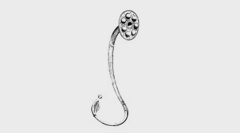Keywords
Danish immigrants, museum, heritage
Abstract
In 1979 I had the opportunity to travel with a group to China where I had the good fortune to visit Tachai, a model agricultural commune. Up until the mid-1940s, generations of the inhabitants in this area had been impoverished. They had lived in caves in hills. Their crops had been destroyed over and over by drought, flooding, insects, and hailstorms. In 1945 land reform was insituted and the peasants set up the first mutual aid team in China. By 1953 they had a ten-year plan for reclaiming the land and building new homes. Just when the plan was finished in 1963, a catastrophic flood destroyed their terraces and 97 percent of their housing. They did not give up - they began resetting the fallen cornstalks by day and rebuilding their houses by night. By the time I was in Tachai, the terraces were producing remarkable yields (200 bushels of corn per acre) and the people were once again in comfortable homes. But in the middle of the commune was a hill, a piece of land left in its original condition, with holes that led to the caves where the people had lived previously. The Chinese told us that this hill was purposely preserved so that their young people might "know the way it was."
Recommended Citation
Betsinger, Signe Nielsen
(1986)
"The Danish Immigrant,"
The Bridge: Vol. 9:
No.
1, Article 5.
Available at:
https://scholarsarchive.byu.edu/thebridge/vol9/iss1/5
Included in
European History Commons, European Languages and Societies Commons, Regional Sociology Commons


